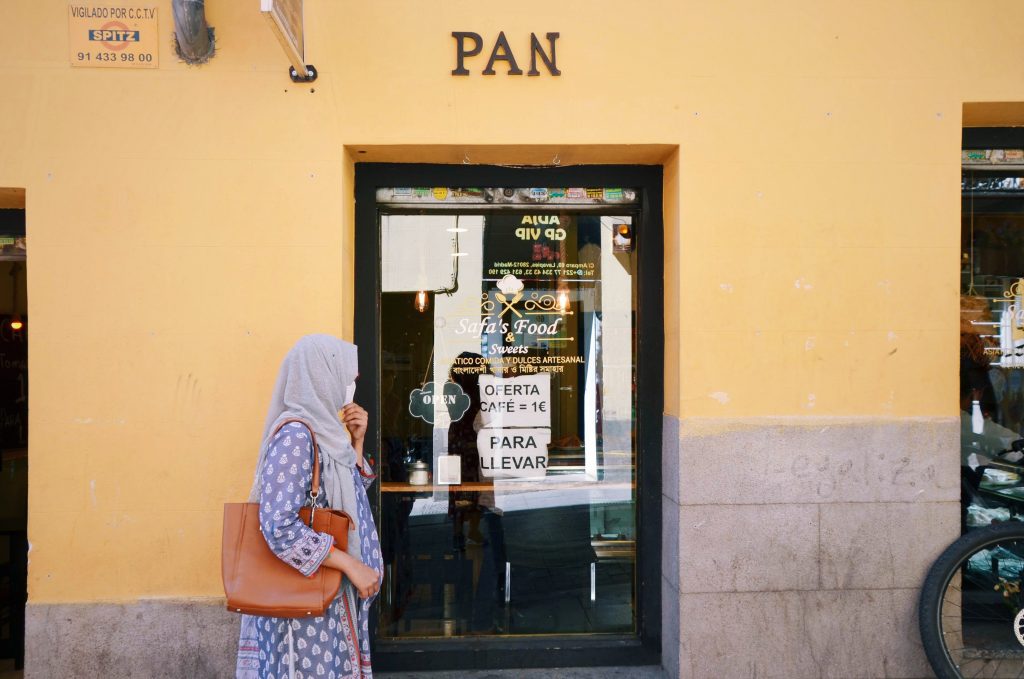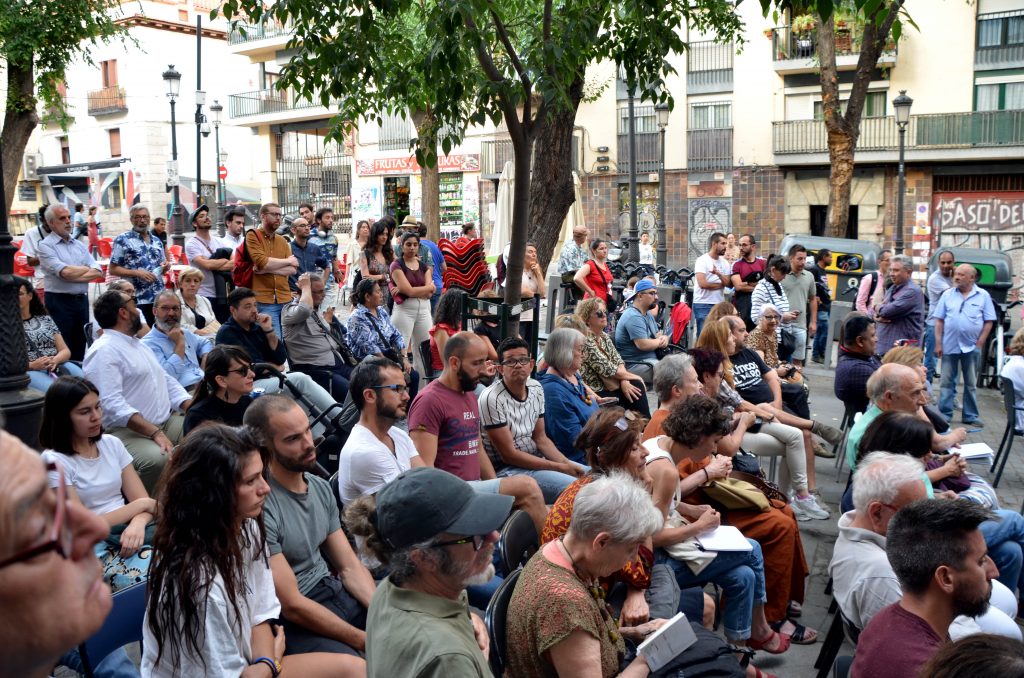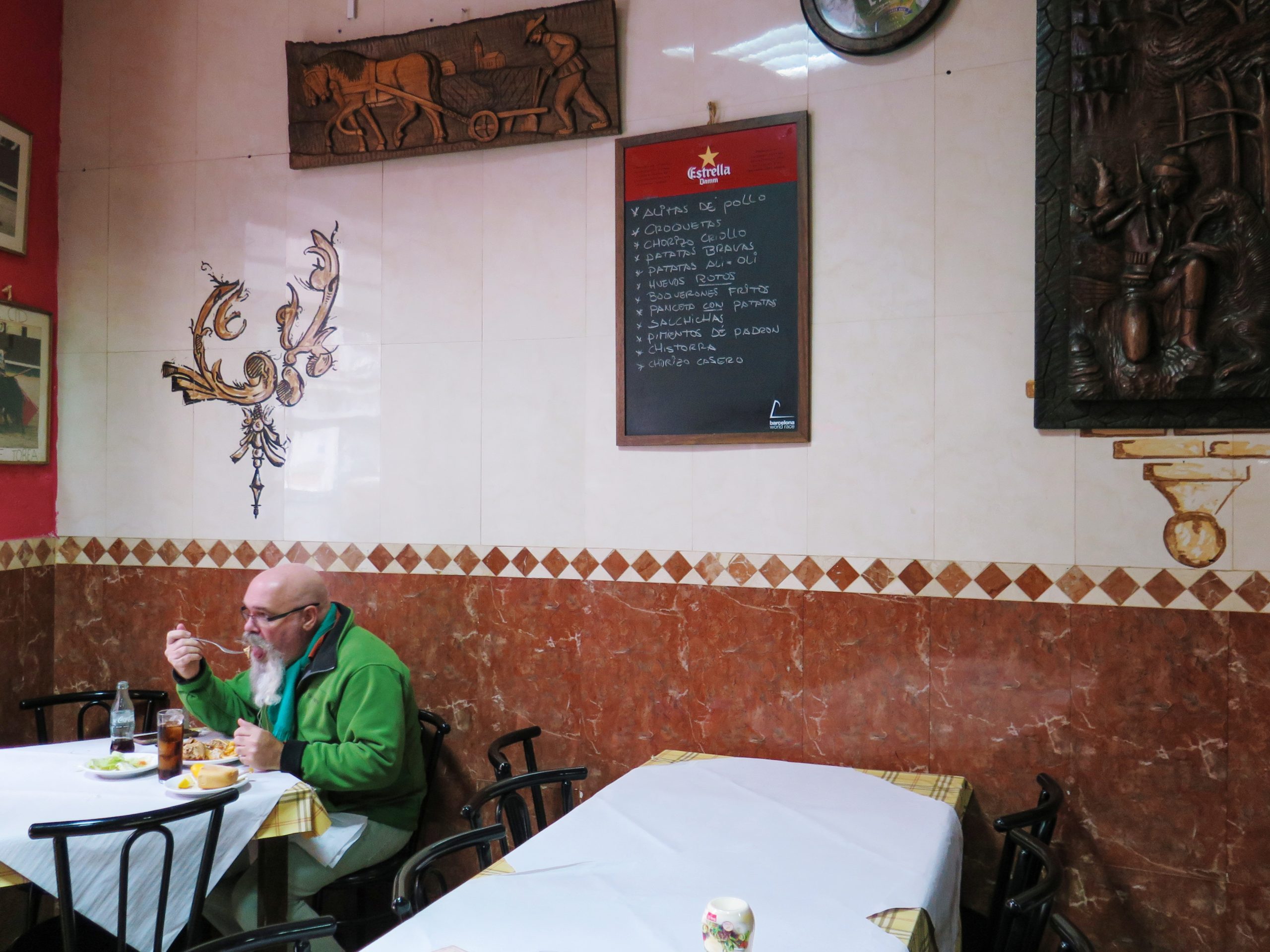Author & photography: Leah Pattem
Food plays a central but often overlooked role in the process of gentrification. While much attention has been paid to rising rents and residential displacement, the commodification of food is equally devastating to a community.
To many, Lavapiés is a foodie destination. It’s a dazzling melting pot of community diners, innovative restaurants and fun bars offering good wine, elegant cocktails and vermouth on tap. Our chaotic terraces hum with gregarious millennials and Gen Z on a barrio night out, and there are just enough abuelxs chilling on benches to give Lavapiés that feel of authenticity. From the outside, this seems like the coolest neighbourhood in the Spanish capital, and the last place you’d associate with food poverty.
Over the last 10 years, Lavapiés has undoubtedly undergone more gentrification than any other part of Madrid, and one clear indicator of this is the near-total disappearance of no-frills bars. Even in the long-since gentrified barrios of Sol, Malasaña and Chamberí, you’ll find more no-frills bars than in the historically working-class area of Embajadores. Our traditional markets, fishmongers and modest eateries that once served everyone’s needs have all but vanished. In their place are modern restaurants and concept bars where time spent inside could set you back a morning’s wage.
While this pricing might feel alienating, what it really reflects is the relentless increase in rent, and a no-frills bar often can’t survive such hikes. With no long-term rent regulation for commercial properties – a conscious decision made by Madrid’s City Council – small business owners are under immense pressure just to stay afloat. And so, in move new bars for whom it is non-optional to target higher-spending customers who can absorb the extra cost. But that class shift comes with consequences – the gentrification of food itself.
Classic, cheap dishes that were once accessible everyday options are being appropriated and rebranded as curated cultural experiences, and sold at prices that exclude the very communities they originated from. The recipes themselves haven’t even changed much, but the prices in Lavapiés can vary: a pincho de tortilla can be €3 or €10; a taco can be €1 or €6; a plate of hummus can be €5 or €9; and a coffee can be €1 or €5.

On paper, Lavapiés has no shortage of food choices, but this masks a deeper truth: the barrio is becoming a hyper-local food desert – a place where access to fresh, healthy, affordable, and culturally familiar food is slowly disappearing. I’m finding that my longer-term neighbours – those both above and below average income – must either spend more than they can afford on food, or travel further for food – or, in extreme cases, go without food. What looks like a thriving food scene in Lavapiés is, in practice, a growing ‘food mirage’ where there appear to plenty of options, but fewer and fewer are truly accessible.
Lavapiés has more food banks than most barrios, but grassroots food projects have also emerged as hopeful responses to food access issues and are cultivating empowerment in Lavapiés. One example is Esta Es Una Plaza, a community green space established on the site of a demolished building. Here, local activists collaborate with residents to grow fresh, seasonal fruits, vegetables, herbs, and spices. Anyone in need or on low incomes is welcome to harvest what they require. This urban garden project not only tackles local food poverty, it also forges community bonds which is an act of resistance to gentrification.
Another response to Lavapiés’ food access issues was SuperCoop, a project that only ever reached planning stage but which could easily be revived. This cooperative/buyers’ club was a model in which members could benefit from bulk-purchasing prices through collectives. Similarly, on the same street, was self-managed social centre La Canica, where food could be exchanged for skills or education. Sadly, La Canica was evicted last summer and converted into four illegal tourist apartments – another profound example of how gentrification affects food access.
Supermarkets must also consider offering up community spaces for residents to organise – this might sound radical but it doesn’t have to be. In Lavapiés, in the 24-hour Carrefour, there’s a no-frills café that serves the local community. Much criticism towards this supermarket chain is well deserved, but we can’t overlook the fact that this café is one of the few affordable options for many who live here.

In Lavapiés and the surrounding areas, we have a strong tradition of grassroots organising, with neighbourhood associations and collectives that reflect the diversity of today’s residents – longtime locals and newcomers, Spanish and foreign alike. These groups actively foster community participation in municipal decision-making and possess the collective power to shape the future of the barrio.
However, a major gap in community organising is, once again, connected to the gentrification of food. In Lavapiés, there have long been tensions between residents and local businesses, which at times seem to actively work against residents’ interests. A clear example of this is one annual event, which has played a significant role in the gentrification of Lavapiés: Tapapiés. This colossal ten-day spectacle of food commodification brings around 100,000 visitors to the barrio in that same period, and the result is overcrowding of bars and restaurants, as well as tonnes of rubbish which is left scattered and piled up on streets and plazas.
Visitors love it; neighbours hate it – myself included. More recently, some businesses have begun opting out of Tapapiés in protest against its exploitation of the barrio, but this act of resistance needs to go further. We must build on this momentum to ensure that all local businesses factor in the needs of residents – not just visitors – if they are to truly belong and thrive in the neighbourhood.
In talking about solutions, it’s important to recognise a phenomenon that often masquerades as a solution but falls short: the idea of ‘saving’ local businesses. Where to spend your money is a deeply politicised choice, and mainstream discourse has pushed the idea that voting with your fork can help communities.
Of course, it can and it does, but gentrification also thrives on this logic: that you can change the world by shopping ethically, supporting local businesses and no-frills bars. Though appealing, this individualistic approach is ultimately fleeting and can easily be co-opted by capitalist enterprises that exploit the narrative of race and class struggle.

The people of Lavapiés are behind groundbreaking social movements, and we need the council to take our policy ideas seriously. Many of these ideas are already being put into practice and we have demonstrated they can work, if given half the chance. But we also need institutional support – regulations that address both residential and commercial spaces so that they are affordable and available. Furthermore, we need constitutional protection for commercial premises from being converted into tourist apartments – the opposite of what the Madrid City Council has just legislated.
Lavapiés remains one of the most culturally rich and diverse neighbourhoods in Madrid, and I’ve loved living here for more than a decade. But despite all of our community engagement, there remains an urgent need for policy support, or the neighbourhood risks becoming little more than a poorly curated foodie theme park – one that trades on the idea of cultural wealth and diversity while in fact rapidly expelling communities. For Lavapiés to remain a barrio with space for everyone, we need to stop thinking of food as a commodity and start treating it as a public good – just as we do with housing.
Support this platform for just €1 per month
You may have noticed that I don’t run ads, nor accept sponsors or investors. Independence is everything and what I decide to publish will not be influenced by those in a position of capital, privilege or power. Therefore, I invite only you to support this platform and only you to help me keep doing what I do. Thank you, Leah.







Leave a Comment